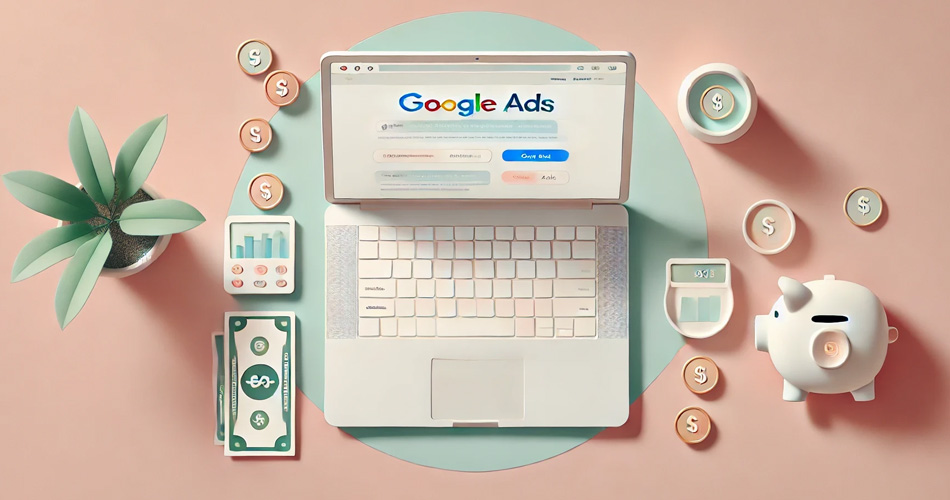How to Make Google Ads Work for Your Budget
Saturday, May 17th, 2025

Google Ads can feel like a mystery, especially when you’re trying to keep costs low while still getting results. The good news? You don’t need a huge budget to see success. With a few smart strategies and a little creativity, you can make Google Ads work for you, whether you’re marketing a small business, blog, or passion project. Let’s dive into some approachable ways to make Google Ads fit into your budget and help you achieve your goals.
Understand Your Goals
The first step in making Google Ads work for your budget is knowing what you want to achieve. Are you trying to drive traffic to your website? Get people to sign up for your newsletter? Sell products? Knowing your goals keeps you focused, so you don’t overspend on ads that don’t deliver results.
Pro tip: Break your goals into smaller, specific objectives. For example, instead of saying, “I want more sales,” try, “I want to increase sales by 10% in the next month.” This helps you measure success and adjust your marketing strategy as needed.
Start Small with Your Budget
One of the biggest misconceptions about Google Ads is that you need to spend a lot to see results. In reality, you can start with as little as $5 a day and still reach your target audience. The key is to allocate your budget to campaigns that offer the best return on investment (ROI).
Try experimenting with a small budget at first to see what works. Once you figure out which ads perform well, you can gradually increase your spending. Think of it as testing the waters before diving in.
Choose the Right Keywords
Keywords are the backbone of Google Ads. They determine when your ads show up in search results. Start by focusing on low-cost, highly targeted keywords that align with your goals. Tools like Google’s Keyword Planner or Ubersuggest can help you find affordable options.
Long-tail keywords (phrases with three or more words) are especially useful for small budgets. For example, instead of targeting “marketing,” try “budget-friendly marketing tips” or “how to market with Google Ads.” These phrases are often less competitive and more likely to attract the right audience.
Use Location Targeting
If your business serves a specific area, location targeting is your best friend. This feature lets you show your ads only to people in certain cities, states, or even zip codes. Not only does this save money, but it also ensures your ads are reaching the people most likely to engage with your brand.
For example, if you own a boutique in Austin, Texas, you don’t need your ads showing up for someone in Seattle. Keep your targeting as specific as possible to maximize your budget.
Create Eye-Catching Ad Copy
When you’re working with a small budget, every click counts. Your ad copy needs to grab attention and encourage people to take action. Use clear, compelling language that speaks directly to your audience’s needs or desires.
Think about what sets your brand apart. Are you offering a special deal? Do you have glowing reviews? Highlight these benefits in your ad. And don’t forget to include a strong call-to-action, like “Shop Now,” “Learn More,” or “Sign Up Today.”
Focus on Remarketing
Remarketing (or retargeting) is a powerful way to make your marketing dollars go further. It allows you to show ads to people who have already visited your website or interacted with your brand. Since these users are already familiar with you, they’re more likely to convert.

Setting up a remarketing campaign is easy with Google Ads. All you need is a small piece of code (called a tag) on your website. Once it’s in place, Google will track visitors and serve your ads to them as they browse other sites.
Monitor and Adjust Regularly
Google Ads isn’t a “set it and forget it” kind of tool. To make the most of your budget, you need to keep an eye on your campaigns and make adjustments as needed.
Check your metrics at least once a week to see what’s working and what isn’t. Are certain keywords costing too much? Is one ad getting more clicks than the others? Use this data to optimize your campaigns and focus on what delivers the best results.
Pro tip: Don’t be afraid to pause campaigns that aren’t performing well. It’s better to reallocate your budget to something more effective.
Leverage Free Tools and Resources
Google Ads offers a variety of free tools to help you succeed, even on a tight budget. The Keyword Planner, Analytics, and Performance Planner are all great for beginners. There are also countless tutorials, guides, and even free certifications through Google’s Skillshop program.
Increase brand loyalty by opting to buy consistent web traffic that drives returning visitors.
Taking advantage of these resources can help you improve your campaigns without spending extra money on consultants or agencies. Plus, you’ll gain valuable skills that can help with other areas of your marketing efforts.

Making Google Ads work for your budget doesn’t have to be overwhelming. By starting small, targeting the right audience, and regularly refining your campaigns, you can achieve your goals without breaking the bank. With a little patience and creativity, you’ll be well on your way to running effective marketing campaigns that grow your business and connect you with the people who matter most.
Ready to dive into Google Ads? Start small, stay focused, and remember: every dollar you spend is an investment in your success. You’ve got this!
Filed under: Tips & Tricks
Tags: marketing
Exclusive Offer!
1,500,000 Points for $110 $68. If you're running low on points — don't miss out
limited time